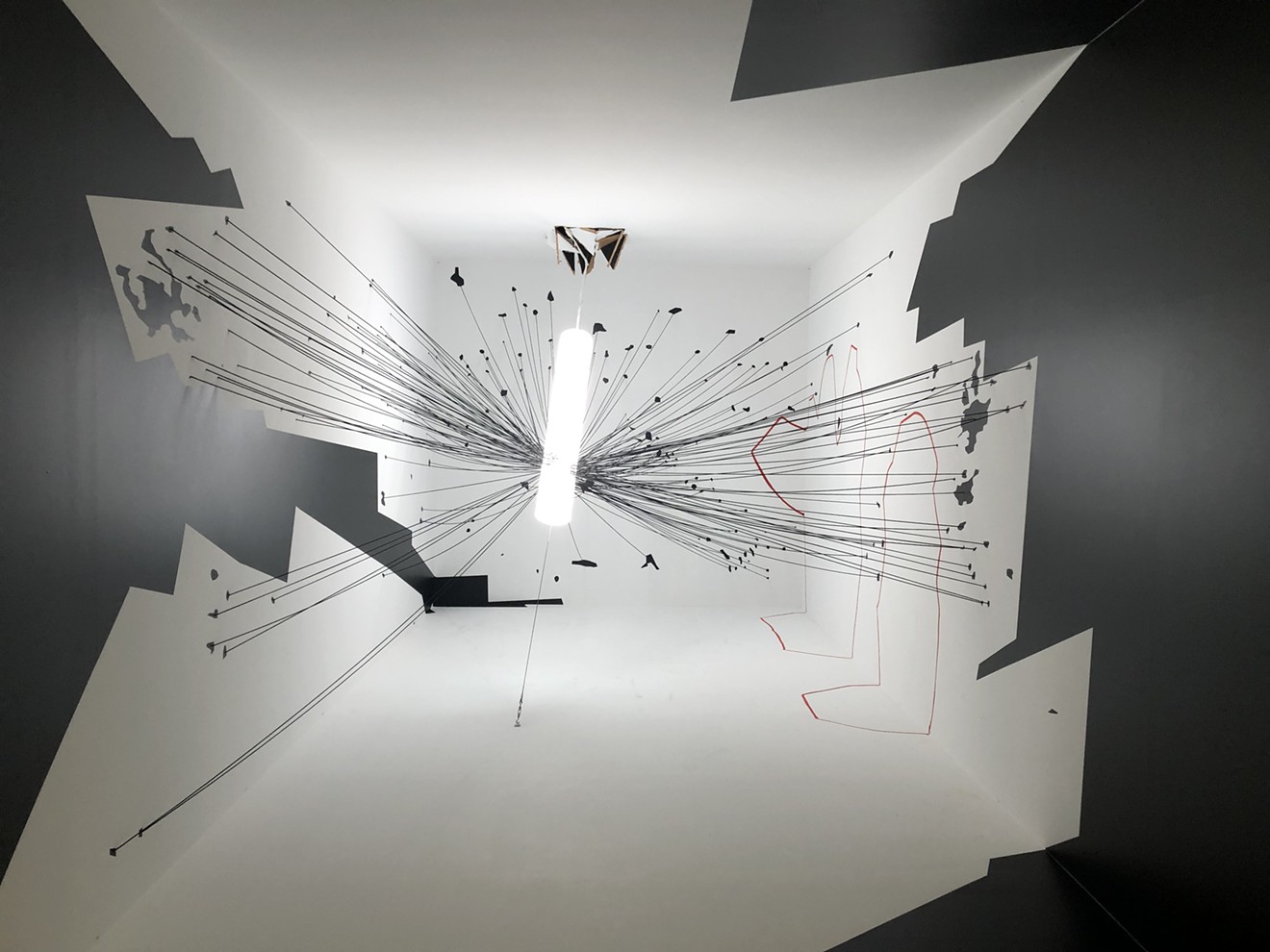The reconstruction transpires more than 200 years from now, but we're already seeing a version put to use. As explained in a new exhibit at Miami-Dade College's Museum of Art and Design, Forensic Architecture — a London-based group of artists, journalists, and other media professionals — uses the technology of the future to solve the crimes of today. But these folks aren't concerned with the kinds of stories told in true-crime podcasts and TV shows. Instead, the group's work centers on crimes committed by the state against ordinary people.
It's hard to call the work on display in "Forensic Architecture: True to Scale" art exactly. The exhibition offers a strikingly beautiful installation, Drone Strike in Miranshah, for example, that illustrates what its title describes: a missile launched by a U.S. military drone hitting a target in Pakistan. But what's more fascinating is the way the piece was created: Using cell-phone footage obtained by MSNBC, Forensic Architecture was able to determine the location where the missile struck and create a sculpture — a fluorescent light, suspended by wires in a shipping container-size box, that shows the extent of the damage. Red lines outline the human victims.
Other displays, most of them explained through video screens and in projection rooms, are even more methodical, employing even more futuristic techniques to form their cases. An investigation of a police shooting in Chicago deconstructs the "split-second reaction" of a white officer who shot a young black man, connecting the incident to its context in the community and to the history of racial bias in policing.
In another case, the group created a virtual-reality rendering of a street in the Palestinian city of Hebron in order to reconstruct an incident in which an Israel Defense Forces (IDF) officer violently assaulted an unarmed Palestinian. The officer had subsequently left the IDF and joined the group Breaking the Silence, whose members, much to the Israeli government's chagrin, speak out against the violent acts they committed against Palestinians during their time in the military.
(The IDF is implicated in at least two other unrelated investigations included in this exhibition: In one, video footage shows a crop-duster spraying a field in the Gaza Strip, along with images of the crop damage inflicted; in another, Forensic Architecture assists a group of Bedouins living in Israel in disproving the government's claim that their town did not exist before the Israeli state was formed.)

The video Virtual Witnesses: Assembling the Testimonial Space of Israeli Violence in Hebron shows Palestinian residents using VR headsets provided by Forensic Architecture.
Photo by Douglas Markowitz
The exhibition is deeply engrossing, even beyond its social justice agenda. There's so much detail here that one could spend hours, even days, sifting through it all. Forensic Architecture posts much of its work online, but the interactivity involved in this presentation makes it much more satisfying. After all, there's nothing like stepping into the holodeck yourself.
"Forensic Architecture: True to Scale." Through September 27 at Museum of Art and Design at Miami Dade College, Freedom Tower, 600 Biscayne Blvd., Miami; 305-237-7700; mdcmoad.org. Open 1 to 6 p.m. Wednesday, Friday, Saturday, and Sunday and 1 to 8 p.m. Thursday; closed Monday and Tuesday. Admission costs $12 for adults, $8 for seniors and military, and $5 for students; children under 12 and MDC students, faculty, and staff get in free.












